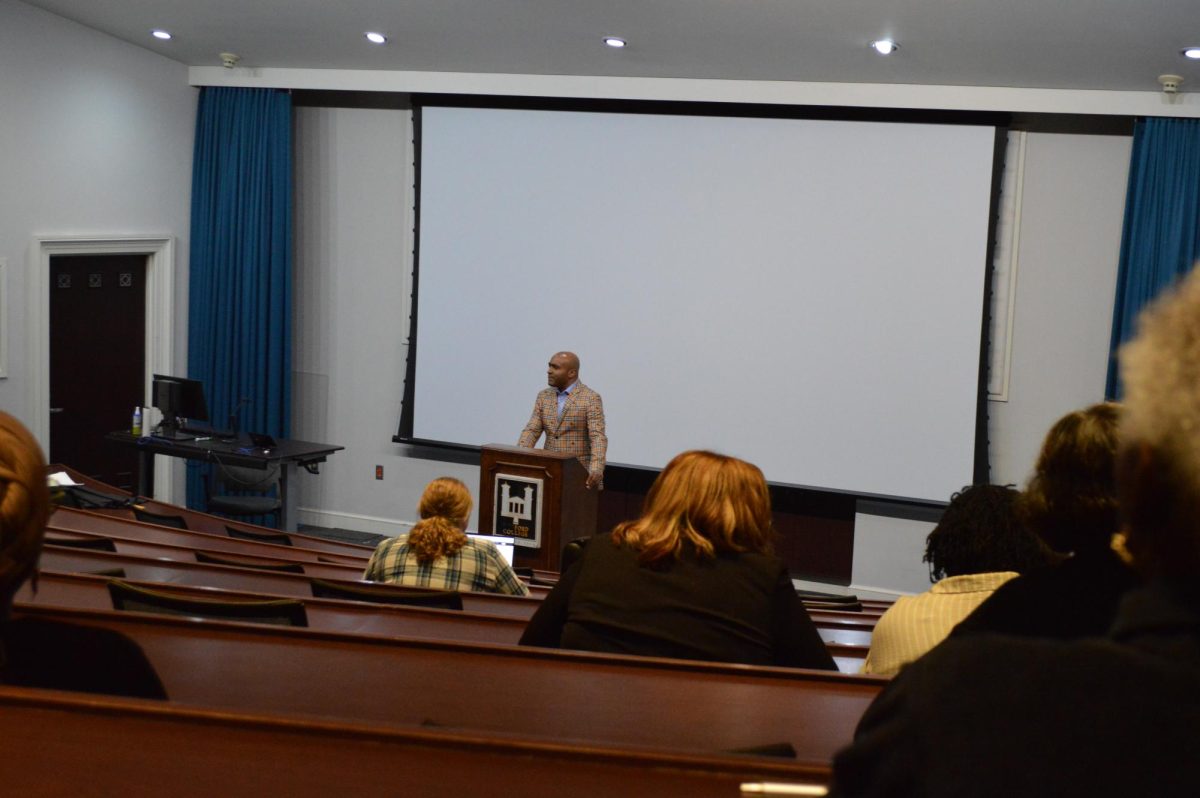What some professors really think of midterm grading
Midterm grades are a representation of students’ progress and performance during any given semester, and their purpose is to accurately reflect the work that students have done up to that point. But do they really? Do they always?
The short answer, said Anne Catllá, Associate Professor of Mathematics: “different fields view midterm grades differently.”
For Catllá, the main value of midterm grades is that they show her any possible disconnects in how she sees her students learning versus how they see themselves learning.
“Each instructor, discipline, and course,” Catllá said, “will have different goals and approaches to teaching that lend themselves to different ways to gauge student learning. And what student learning even means can differ.”
Catllá believes that students are more likely to change their approach to learning in a positive way when an instructor gives detailed analyses of their performances through their grades.
However, Joseph Spivey, Associate Professor and Chair of Mathematics, said that, for him as a professor, midterm grades are a bit “silly” because of how he structures his classes and how he constantly updates his students’ grades on Moodle for them to see. As an advisor, though, he finds them “really, really helpful.”
When working with advisees, Spivey uses midterm grades to inform him of where students could use some support, but Spivey also recognized the importance of using different assessment strategies to evaluate students in different ways and to learn different things about them.
In his upper-level math classes, for instance, Spivey uses testing methods such as problem sets, portfolios and even essays to alleviate students of the regular time pressure that comes with traditional written tests. While he finds traditional tests useful for statistics and calculus classes, he feels that “you’re sort of testing a student in that moment, and I would like for a student to be able to demonstrate that they understand something maybe not at that moment, but maybe later on.”
Spivey also discussed mastery-based grading, a system that eliminates the concept of partial credit and that gives students multiple opportunities to attempt a specific concept until they master it.
Other instructors, such as Masha Vlasova, Assistant Professor of Studio Art and Art History, endorse the strategy of “ungrading,” which trades out A-F grading in favor of growth-oriented learning.
This system, stemming from critical pedagogy, an educational philosophy that seeks to empower students to question traditional educational structures, features grading methods like grading contracts, portfolios and student reflections with feedback from peers and professors alike.
In fact, because of her use of “ungrading,” Vlasova “asks students to give themselves midterm grades and to justify it.” In order to do this, she gives students a set of midterm reflection questions in addition to their weekly or biweekly reflections. The questions range from students’ personal goals to their evaluations of their own performances before asking them to give themselves their midterm grades.
Vlasova reserves the right to disagree with students’ evaluations of themselves for better or for worse, but she values students’ input, as she finds that “getting information from my students helps me support them better and give them better feedback.”
Catllá added that, if the system of midterm grades were to be altered or done away with, it could not be without “a discussion about why instructors assign midterm grades and what they do and do not tell both the students and the instructors.”
Feedback from both professors and from students is a key component of the grading contract system that John Ware, Associate Professor and Chair of English, employs in his classes as well as reflective portfolios.
The grading contract, Ware explained, “is a way of detailing for students at the start of a course what will factor into their final grade…then giving them some time to ask questions about that or to suggest changes to a contract, and then asking them to sign that they have read this, that they understand how it works, and that they agree that this seems a fair grading policy.”
For Ware, the grading contract allows him, and other professors who use it, to be more objective in their grading as well as allowing students to “focus on developing their writing relative to what their aims and purposes are with input from me, not necessarily trying to craft a piece of writing that pleases me and get them the grade that they want or the best grade that they can get.”
Ware still uses midterm grades as a way to evaluate students six weeks into the semester, but he feels as though the grading contract system has made his midterm grades “more holistic and probably more useful because they take into account a number of areas of student performance.”
This consideration of multiple areas of student performance is key to Ware, who believes that midterm grades are only as useful as they are clear.
“The more aspects or channels of student performance a midterm grade can take into account and speak to,” Ware said, “then the more valuable it is. The more clear (sic) what it is that grade signifies, then the more valuable or useful it is. The more it can also lay out opportunities to have an effect on that grade, change that grade somehow…then the more useful it is. If they don’t accomplish any of those three things, then I don’t know what it accomplishes.”






























